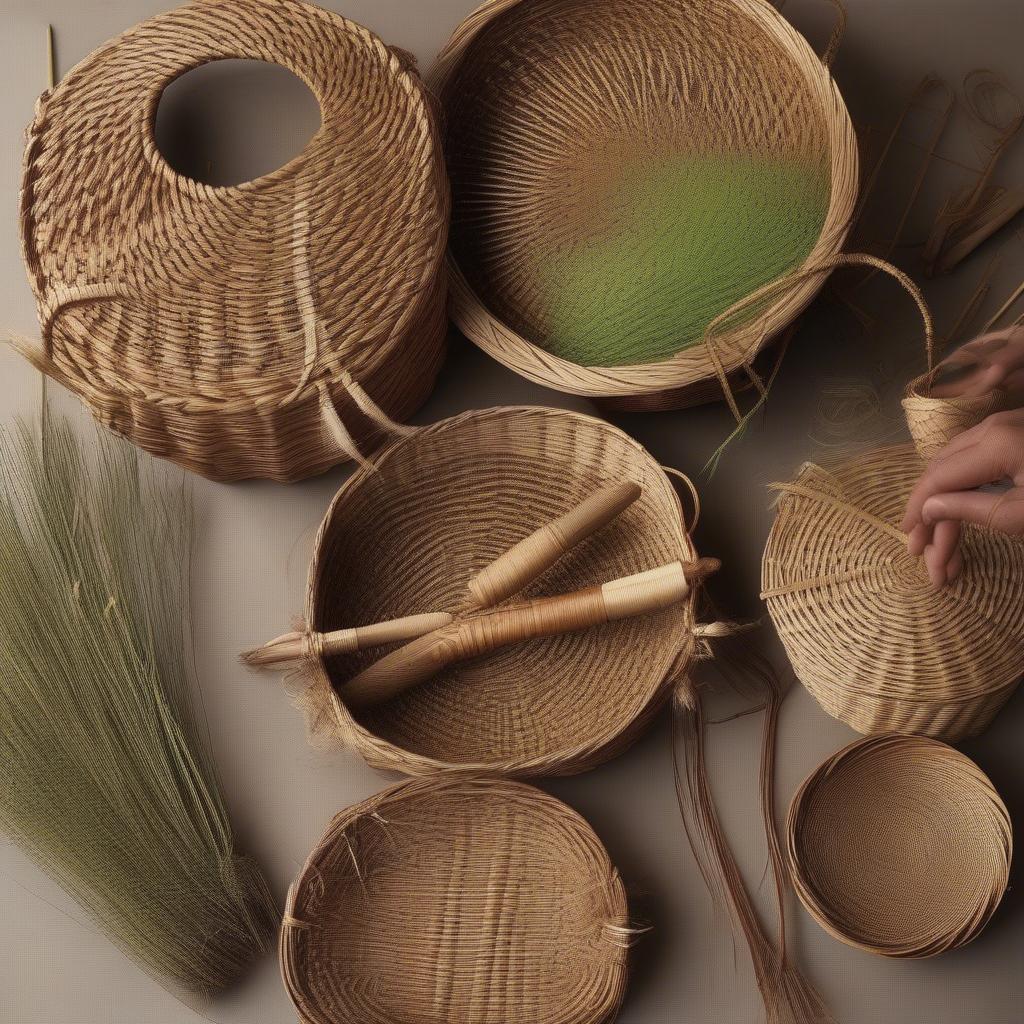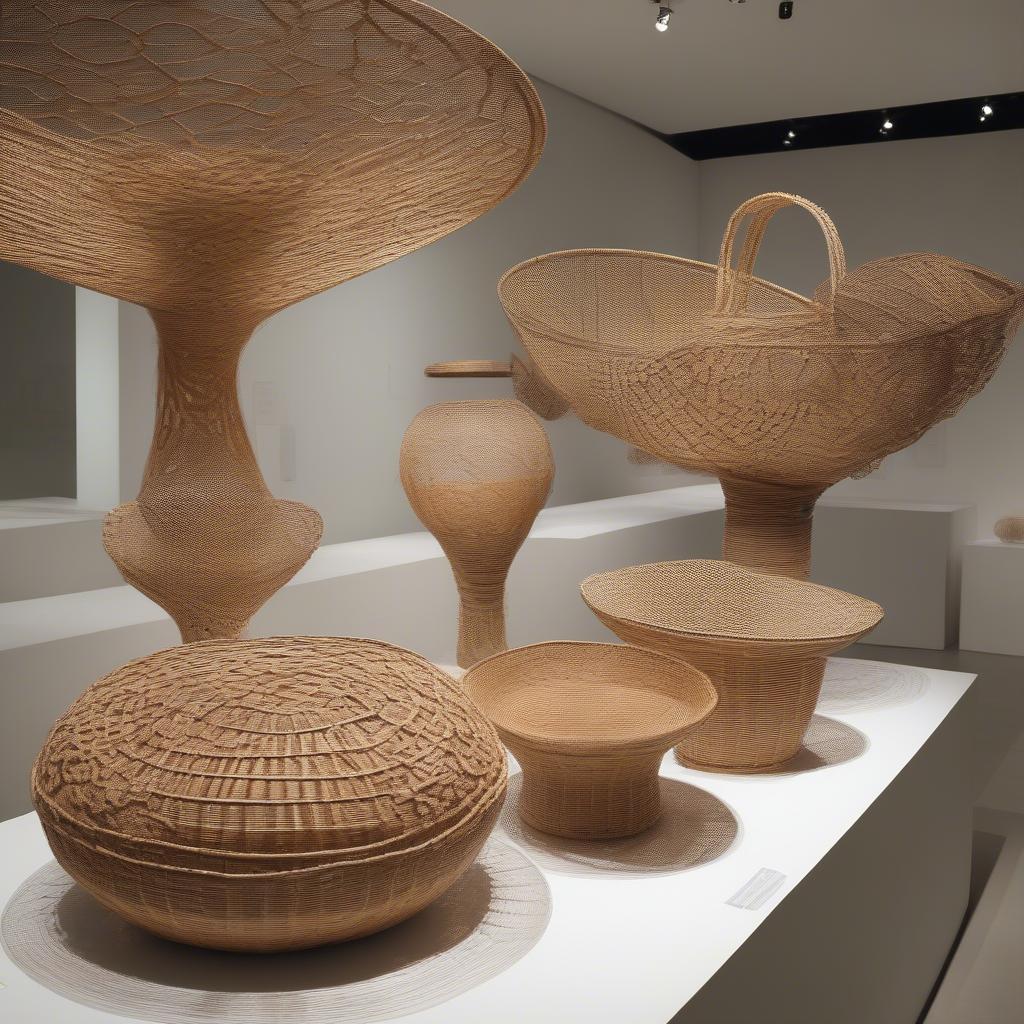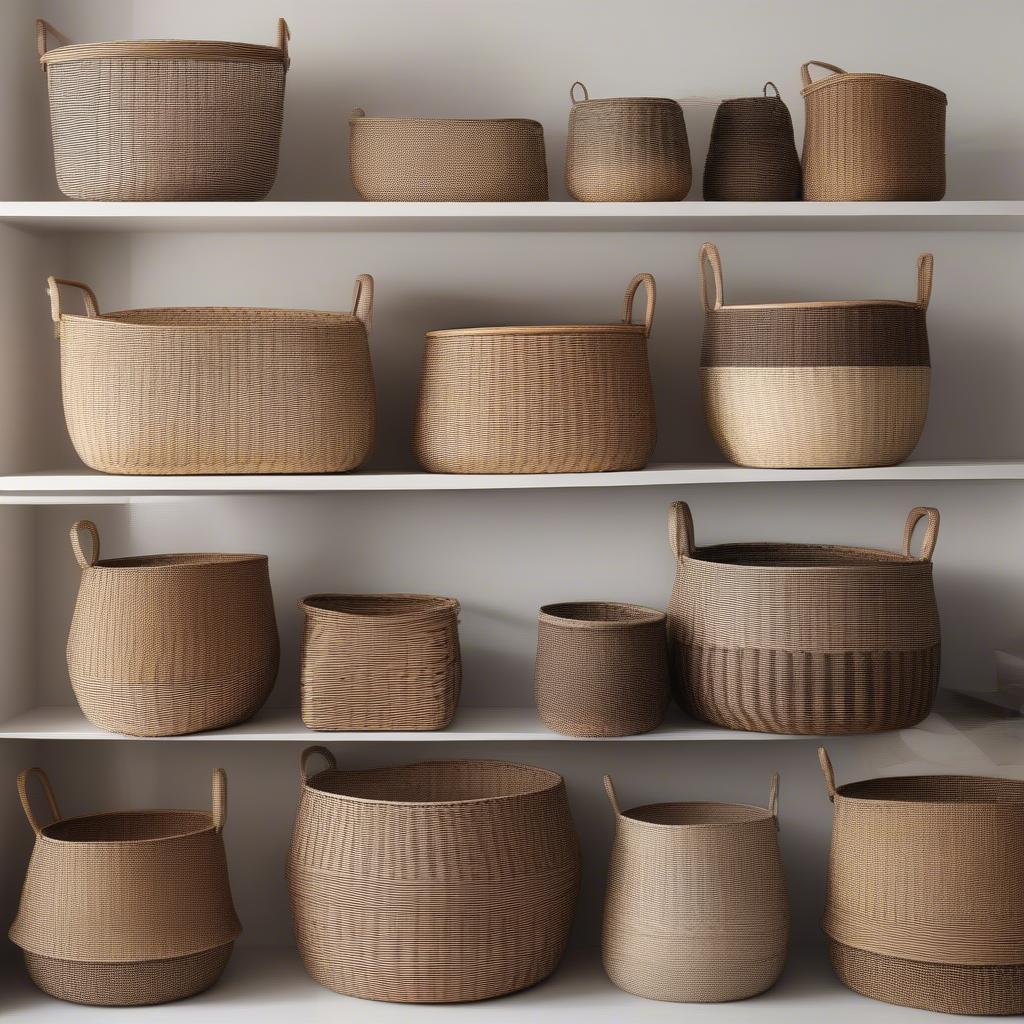Basket Weaving
Unveiling the Beauty of Basket Weaving Art
Basket Weaving Art is more than just a craft; it’s a testament to human creativity, transforming simple materials into intricate works of art. From ancient traditions passed down through generations to contemporary artists pushing the boundaries of the medium, basket weaving captivates with its diversity and artistry.  Traditional Basket Weaving Techniques
Traditional Basket Weaving Techniques
A Journey Through Time: The History of Basket Weaving
Basket weaving is one of the oldest crafts in the world, predating pottery and even textiles. Evidence suggests that early humans used readily available materials like grasses, reeds, and vines to create baskets for practical purposes such as carrying, storing, and trapping. Over time, these functional objects evolved into intricate expressions of art, reflecting cultural identities and beliefs. Ancient civilizations like the Egyptians, Greeks, and Romans all embraced basket weaving, leaving behind remarkable examples of their artistry.
From the tightly woven baskets of Native American tribes to the vibrant patterns of African designs, each culture has developed its own unique style and techniques. These traditions continue to thrive today, preserving a rich heritage while inspiring contemporary artists.
 Contemporary Basket Weaving Exhibition
Contemporary Basket Weaving Exhibition
Exploring the Materials of Basket Weaving Art
Basket weaving utilizes a wide array of materials, each possessing unique properties that contribute to the final piece. Wicker and rattan are two popular choices, known for their durability and flexibility. Wicker, often mistaken as a material itself, refers to the weaving process and can involve various materials like willow, reed, or bamboo. Rattan, a vine native to Southeast Asia, is highly prized for its strength and ability to be bent into intricate shapes.
Other natural materials used in basket weaving include:
- Willow: A flexible and readily available material, ideal for beginners.
- Reed: A strong and durable material, often used for larger baskets.
- Bamboo: A versatile material known for its strength and sustainability.
- Seagrass: A strong and water-resistant material, perfect for coastal-inspired designs.
Choosing the right material is essential for achieving the desired look and functionality of the basket.
You might want to check out our basket weaving artists page for more inspiration.
Techniques and Styles in Basket Weaving Art
Basket weaving encompasses a diverse range of techniques, each offering unique possibilities for creative expression. Coiling, twining, and plaiting are among the most common methods. Coiling involves wrapping a continuous material around a core, while twining involves interweaving two or more elements. Plaiting, similar to braiding, creates a flat surface.
These techniques can be further elaborated upon to create complex patterns and textures. From simple open weaves to intricate geometric designs, the possibilities are endless. The skill and creativity of the weaver are paramount in bringing these techniques to life.
Do you want to learn more about some famous basket weaving artists?
Basket Weaving in the Modern World
Basket weaving is experiencing a resurgence in popularity as people seek out handmade, sustainable goods. Contemporary artists are pushing the boundaries of the medium, incorporating unconventional materials and creating sculptural forms that transcend traditional baskets. From functional objects to intricate art pieces, basket weaving continues to evolve, reflecting the ever-changing world around us.
For those interested in exploring the art form themselves, numerous basket weaving classes nj are available to learn from experienced artisans.
 Modern Wicker Basket Designs
Modern Wicker Basket Designs
What are the basic basket weaving patterns?
Common basic patterns include the randing weave, twining weave, and wicker weave.
Is basket weaving difficult to learn?
Like any craft, it takes practice, but the basic techniques are relatively easy to learn.
Conclusion
Basket weaving art is a celebration of human ingenuity and creativity. From its humble beginnings as a practical craft to its current status as a recognized art form, basket weaving continues to inspire and captivate. By understanding the history, materials, and techniques involved in basket weaving, we can appreciate the artistry and skill behind each unique creation. Basket weaving is more than just a craft; it’s a tangible connection to our past and a testament to the enduring power of human creativity. Looking to learn more about Native American basketry? Check out our resources on native american basket weaving artist.
FAQ
- What is the difference between wicker and rattan?
- What are the best materials for beginners to use in basket weaving?
- Where can I find basket weaving classes near me?
- What are some common basket weaving patterns?
- How long does it take to learn basket weaving?
- What are some contemporary basket weaving artists to follow?
- How can I care for my woven baskets?
Perhaps you’d like to explore contemporary basketry further by visiting our page dedicated to contemporary basket weaving artists.
For assistance, please contact us at Hanoi, Vietnam or Tech Avenue, Suite 12, San Francisco, CA 94105, USA. We have a 24/7 customer service team.
